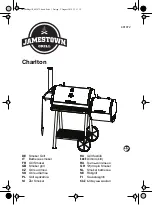
Page 15
Page 14
Page 15
Page 14
When connecting the speaker wiring you’ll see that it has two different conductors
- silver and copper colored are the most common. If you can’t see the conductors
themselves, look closely at the insulation.
You’ll notice that the insulation over one conductor is different than that over the
other conductor - one will have slight molded ridges in it, the other will be smooth,
for example. It really makes no difference which one you pick for positive or negative,
just be consistent! Other speaker cable may be marked with designated positive and
negative conductors.
Calibration
Calibrating your speaker levels will ensure that the effort you’ve taken to
correctly position the speakers themselves will pay off when you finally
sit down to enjoy them.
SPL Measurements
To accurately calibrate levels, you’ll need an SPL meter. Radio Shack sells
a digital meter that works very well for this purpose (P/N 33-2055) and it’s about $50.
Set the meter on ‘slow’ and “C” weighting. The dial should be set at either 70dB or 80dB
depending on your preamplifier/processor or receiver’s test tone reference output level.
Consult your owner’s manual to determine what reference point your unit uses (most
use 75dB, so the 70dB setting on the meter would be appropriate in that example). Each
range setting on that particular meter will cover 20dB (10dB above and 10dB below).
So a setting of 70dB would cover between 60dB-80dB range. If you are using another
meter, consult the owner’s manual for proper operation.
Configuration and Reference Settings
1) Begin by reviewing the calibration menu settings of your receiver or preamplifier/
processor. In the speaker configuration menu (as a part of the set-up on your HT
processor), be sure all your speakers are set to “SMALL” with subwoofer to “YES”.
(Please note that many processors require a “SMALL” setting for the main speakers
to allow the LFE subwoofer output function, otherwise bass is directed to the front
channels with the full energy when the speakers are set to “LARGE”. Therefore,
the “SMALL” setting is a good thing, because it ensures low bass is kept out of
the monitors, allowing the entire system to be played louder without strain on the
monitors. It also helps the subwoofer and monitor to blend better, because too much
overlap can actually lead to less bass or ill-defined bass.)
2) From the processor’s speaker calibration menu, set the subwoofer output level to 0
dB. (Start with the gain on the subwoofer at about 1/4 of maximum and make sure
Radio Shack
Digital SPL
Meter








































